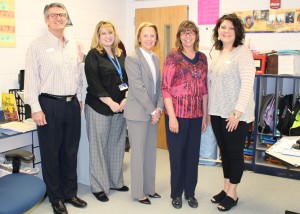 Thanks to a $60,000 grant from the Tyson family and a $10,000 donation from Dr. Doris Hammett, students in Haywood County elementary schools are experiencing STEM education through hands-on learning. Both donations were made through the Haywood County Schools Foundation to support the students and staff of Haywood County.
Thanks to a $60,000 grant from the Tyson family and a $10,000 donation from Dr. Doris Hammett, students in Haywood County elementary schools are experiencing STEM education through hands-on learning. Both donations were made through the Haywood County Schools Foundation to support the students and staff of Haywood County.
STEM education blends science, technology, engineering, and mathematics through project-based learning and prepares students to be the next generation of innovators.
STEM lessons are active and focus on a student-centered learning environment. Students engage in questioning, problem solving, collaboration, and hands-on activities while they address real life issues. Teachers function as classroom facilitators while guiding students through the problem-solving process and plan projects.
“The sooner our children can start learning these STEM subjects, the better equipped they will be for the future,” Jeanie Tyson said. “It’s a great feeling knowing that they’re learning real life applications of science and engineering.”
A tradition of education
Tyson’s family established the Iona Tyson Scholarship Fund in June 1997 after her mother Iona unexpectedly passed away. For 30 years, Iona worked for Haywood County Schools as a teacher, resource program developer, assistant principal, and finally as the elementary school supervisor.
“My mother was extremely passionate about and dedicated to education. She would go above and beyond to make sure every child had every opportunity possible to learn,” Tyson explained. “Our family wanted to see that her passion and love for the children of Haywood County continued. We asked in her obituary that in lieu of flowers, donations be made to a scholarship in her memory.”
For 17 years, the Iona Tyson Scholarship was given to a Haywood County graduating senior who intended to go to college and become a teacher. In 2014, after Tyson’s father passed away, the family decided to revise the fund to provide grants directly to elementary school teachers. Over the next several years, Tyson said the money will be used to fund the STEMscopes program.
“These materials and programs will be around for quite a while to help the children of Haywood County obtain the best education possible,” Tyson said. “I think this program is something my mother would be proud of.”
STEMscopes, growing young minds
Because of the grant, all of Haywood County Schools’ elementary schools were able to purchase STEMscopes equipment. STEMscopes is based on hands-on, inquiry-based investigation, which encourages students to develop their own understanding for the scientific concepts they are learning.
“We see STEM as more of an integrated curriculum that stretches across the school day,” Ron Moss, Haywood County Schools elementary supervisor, said. “Almost everything we do in life has a STEM component, and our curriculum helps students realize that.”
What makes STEM stand out from traditional science lessons, Moss said, is a focus on problem solving and student-led projects. Projects are often connected to lessons students are currently learning about.
First-hand look at hands-on lessons
Tyson, who now lives in Raleigh, N.C., visited three of the county’s elementary schools to get a first-hand look at the grant in action.
Karley Wells’ fifth grade class at Clyde Elementary explained to Tyson how their latest STEM lesson tied into social studies and economics. Students designed and built their own model levees with a set budget. Acting as engineers for their city, teams created sturdy barriers using different materials to prevent water from flooding a city in the event of a hurricane. To many of the students’ surprise, sand was an ineffective material to prevent flooding.
Tyson recently retired from the N.C. Department of Transportation as a transportation engineer supervisor, and she explained to the class how she used many of the physics concepts they are learning in her career.
Travis Stinnette, a student in Wells’ class, gave Tyson an overview of the multiple STEM projects the class has completed so far this year.
“My favorite project was when we built a self-sustained ecosystem with a two-liter bottle, soil, pebbles, and a fish,” Stinnette said. “I want to work with exotic animals when I grow up, so I really enjoyed that project.”
Along with Clyde Elementary, Tyson also visited students at North Canton and Junaluska.
“As we walked down the hall at Junaluska, we had to watch our step as kids were sprawled out everywhere drawing life-size pictures of human bodies with the different systems that keep us alive,” Tyson said. “I was happy to see all of the different ways STEMscopes is engaging the kids as they learn about the science disciplines.”
A future in STEM
According to the U.S. Department of Education, all STEM jobs in the U.S. will increase 14 percent from 2010-2020, accounting for millions of positions. Yet, data shows that 3 million of those jobs will go unfilled by 2018.
“Kids who experience STEM early through hands-on learning are the ones who develop a strong understanding of STEM concepts as they get older,” Clyde Principal Clint Connor said. “Thanks to Ms. Tyson’s support, beginning in kindergarten, our students are participating in STEM projects.”
The N.C. Department of Public Instruction states that STEM Education is a key economic driver in the state. It touts STEM education as an economic imperative to transform education, build a world-class workforce, align with emerging industries, and ensure N.C. economic prosperity.
STEM education is one strategy that North Carolina is utilizing to increase high school graduation rates and encourage postsecondary education. The goal of the STEM system is for students to enter high-skill, high-wage, and high-demand careers.
“During my time at the elementary schools, it was especially meaningful and emotional for me to meet some of the teachers and principals who worked with and remembered my mother,” Tyson said. “I felt my mother there with me all day. She is the inspiration for all of us to provide excellent education to prepare these children for the future.”
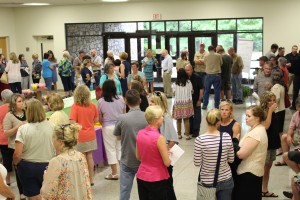 Haywood County Schools marked the end of the 2015-16 school year with an end-of-year reception for employees on Tuesday, June 14 at Haywood Community College. The ceremony celebrated the school system’s 30 employees who retired during the school year, as well as employees of the year.
Haywood County Schools marked the end of the 2015-16 school year with an end-of-year reception for employees on Tuesday, June 14 at Haywood Community College. The ceremony celebrated the school system’s 30 employees who retired during the school year, as well as employees of the year.


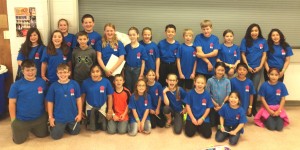
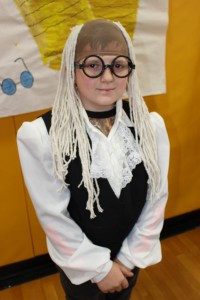
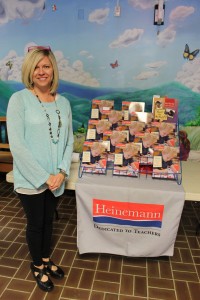
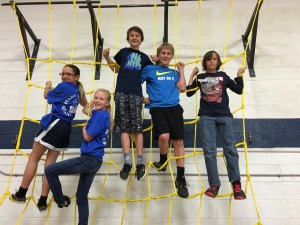
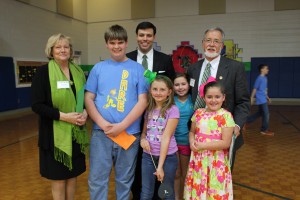 Meadowbrook Elementary School students opened doors and greeted guests as they arrived at the school’s Bring the Green event last week.
Meadowbrook Elementary School students opened doors and greeted guests as they arrived at the school’s Bring the Green event last week.
